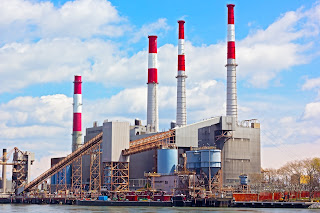 |
| Modern high power boiler room |
Yokogawa,
globally recognized leader in a number of process control fields, has authored
an e-book which provides useful insight into how operators of combustion based
equipment and systems can improve efficiency and enhance safety by employing
modern technology.
[All quoted passages in this article are from the Yokogawa e-book]
The
Yokogawa e-book Combustion & Fired
Heater Optimization offers “an analytical approach to improving safe &
efficient operations” related to the use of combustion & fired heaters in
the process industries. Through presenting an overview of combustion sources,
such as furnaces and fired heaters, the book states that while “fired heaters
pose a series of problems from safety risks to poor energy efficiency,” those
problems “represent an opportunity for improved safety, control, energy
efficiency and environmental compliance.” Fired heaters “account for 37% of the
U.S. manufacturing energy end use.” Tunable Diode Laser Spectrometer (TDLS) technology
helps mitigate safety concerns by “measuring average gas concentrations across
the high temperature radiant sections.”
The
book states that the four main concerns applicable to fired heaters are asset
sustainability, inefficient operations, the operator skillset, and safety and
compliance. Outdated diagnostics and controls have placed unnecessary stress on
operator response, making sustainability of fired heaters difficult. The
emissions of fired heaters are generally higher than designed, and can be
coupled with control schemes for firing rates little changed over the past 40
years. Operators, generally, lack a clear understanding of design, and even engineering
principles of heat transfer are not typically included in education related to
fired heaters. Confounding the situation further, “many natural draft heaters
do not meet this [safety regulation] guideline with existing instrumentation
and control systems.” These complications combine to form a noticeable problem
Yokogawa’s technology hopes to address. The company notes how the fired heater
relies on natural draft instead of forced air, meaning the heaters “typically
lack the degree of automation applied to other process units in the plant.”
Offering a full detail of both the control state of most fired heaters and
their systems defines the process situation currently considered common in the
field, while emphasizing high excess air as providing a “false sense of
safety.”
The
proposed TDLS system allows for the measurement of “both the upper and lower
conditions in a fired heater” by “simultaneously controlling the fuel and air
supply based on fast sample intervals.” Safer burner monitoring and heater
efficiency results from the TDLS measurements of CO, CH4, and O2.
The optimization of air flow control reduces “O2 concentration … from 6% to 2%”
and increases the furnace’s thermal efficiency. Combustion control is achieved
by managing fuel flow and the arch draft. The TDLS integrated system works in
tandem with already established logic solver systems in the plant. The TDLS
technology works as a non-contacting measurement with “full diagnostic
capability” and offers “distinct advantages over single point in situ
analyzers” via reduction of false readings. Specific gas measurements, fast
response time, optical measurement technology, and “high and variable light
obstruction” are featured components of the TDLS system highlighted to show the
technology’s durability and flexibility. The longevity and reliability of the
system is showcased by how the TDLS combustion management system has been
operational in a major refinery since 2010. The percentage of excess O2
in sample fired heaters has decreased by 1% to 1.5%. Measurements by the TDLS
system have been verified by other gas analyzers. The furnace conditions in the
plant are more efficiently monitored and controlled. As a result, the furnace
in the functional environment is “now near its optimum operating point, using
minimum excess air.”
Yokogawa
presents a process-related problem, then details the key points of the problem
while unpacking the causes. The e-book introduces Yokogawa’s technology,
explains the mechanics, and demonstrates how TDLS acts as a solution to the
problem, supported by a tangible example. The book offers great insight for
both the operational principles of fired heaters and a new technology designed
to maximize efficiency in the control process.
The
e-book is included below. More detail is available from product applicationspecialists, with whom you should share your combustion and fired heater
related challenges. Combining your own facilities and process knowledge and
experience with their product application expertise will lead to effective
solutions.
